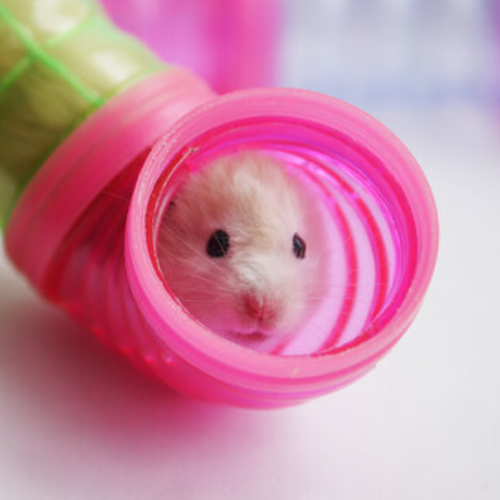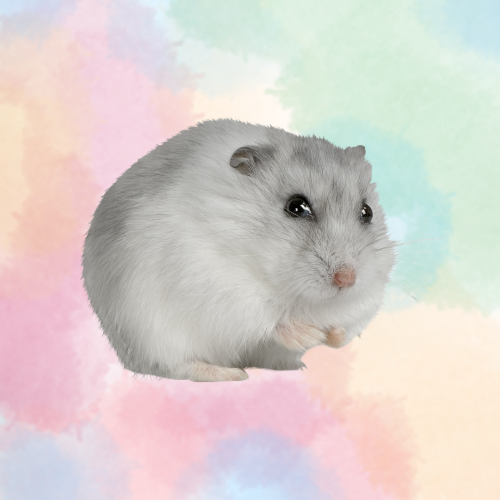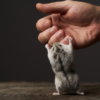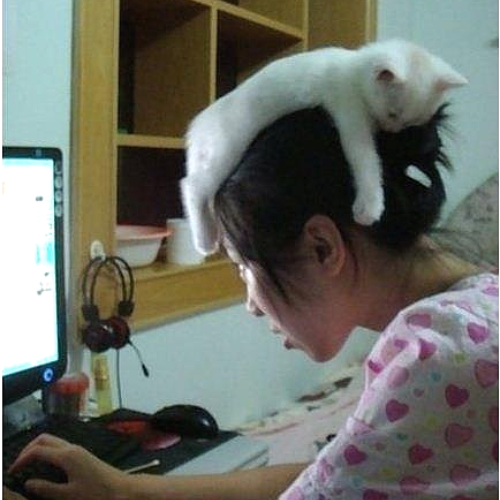Pet owners are naturally concerned when they discover their Hamster is eating its own bedding. So, you might feel that your Hamster is ill or is likely to become ill in the near future. To sort this out, you must be concerned about why exactly is Hamster filling his tube with bedding.
The most likely scenario is that your Hamster is not literally eating its bedding but rather engaging in a habit known as “pouching,” which is a regular animal activity. Your pet hamster is NOT truly consuming its bedding; instead, it is only storing it in its cheek pouches in preparation for moving it to another spot.
Hamsters usually block exits and tubes with their bedding as a security measure. If your hamster keeps filling his tubes with bedding it might be because they are trying to prevent others from coming through the tube.

Your Hamster has cheek pouches on either side of its face, and these pouches stretch all the way back to its chin. The pouches have empty pockets and are really big in size.
These pouches are not exclusive to hamsters; other animals, including monkeys, opossums, and squirrels, also have them. Hamsters are the only rodents known to have them.
Hamsters utilize the pouches in their cheeks to collect food, bedding, or anything else that they believe may be valuable for their nesting or that they may wish to store away and eat at a later time. Hamsters may also use their cheek pouches to store food for later use.
They also use their utilize cheek pouches to move objects from one location to another. To put it another way, you may visualize them as having a built-in backpack attached to the sides of their face.
When you see that your Hamster is filling its cheeks with bedding, you shouldn’t freak out; never try to stop your pet from doing this, and never try to remove the bedding from its mouth. Instead, just observe the behavior calmly and go on.
Your Hamster is not consuming it; instead, they are only pouching it. Keep in mind that hamsters won’t often consume foods that don’t have a pleasant flavor!
Some Other Uses for Hamster’s Cheek Pouches
- The cheek pouches that hamsters have are highly adaptable, and they allow hamsters to accomplish a couple of amazing things with the items they carry.
- Hamster mothers with very small offspring are able to carry their entire litter in the pouches located in their cheeks, allowing them to move freely from one location to another.
- Hamsters will do this if they believe their young are in any kind of danger; the mother will immediately shove the young into her cheek pouches and shift them to a location where she believes they are secure.
- The disadvantage is that the mother can only go a predetermined distance in the allotted time before the oxygen in her cheek pouches runs out.
- Another interesting fact is that certain wild hamsters are able to fill the pouches in their cheeks with air and utilize the air to keep themselves afloat as they swim across the water, which is often done to get away from a predator.
Does Consuming Bedding Pose a Threat to Hamsters
Yes, some types of bedding materials are not appropriate for hamsters, including the following:

- Wood shavings
Wood shavings, namely cedar and pine shavings, are considered toxic to hamsters and potentially trigger negative responses in humans. These shavings have the potential to splinter and become lodged under the skin of your Hamster. As a result of the presence of essential oils in the wood, the shavings made from cedar and pine are also likely to cause respiratory irritation in hamsters.
While not all wood shavings are undesirable, aspen wood shavings are the ones that we recommend utilizing. Shavings made from aspen wood are typically devoid of dust and odor and can absorb fluids.
Newspapers, magazines, and books all have ink in them, which may be hazardous to hamsters if they ingest it or even if it merely comes into contact with their mouths. Ink can also be poisonous to other animals, including humans.
- Scented bedding
Scented bedding typically contains chemicals that are poisonous to hamsters. In addition, it appears that hamsters do not particularly love using scented bedding. It is quite possible that they find it overpowering to have such a strong aroma in their nest.
- Bedding made of fluffy material
Bedding made of fluffy material often becomes tangled and knotted, which might cause your Hamster’s limbs to become trapped.
How Do You Keep Your Hamster From Hiding His Food
It is not healthy nor feasible to prevent your Hamster from acting on his natural impulses by preventing him from living out his natural tendencies. It would be a miracle if hamster owners were able to prevent their pets from burying food because the behavior is ingrained in hamsters and cannot be changed.
It’s possible that you’re worried that your pet would sneak up on perishable food, but if you don’t give them any extra food, that should be enough to keep them from doing so.
In addition, if you are diligent about cleaning the hamster enclosure, it is quite unlikely that any food that has been hidden away will be allowed to sit for long enough to begin to get rancid.
Taking Care of the Tubes
As we have said, some pet owners may occasionally clean any bedding that has been pushed into the tubes. This is something that some pet owners do. You should keep the bedding in place until you are ready to disinfect the enclosure.
Every day, you should throw away any soiled or damp bedding, but the entire enclosure should only be cleaned once every few weeks at the most.
Because there is a greater potential for germs to have grown in this area of the cage if there is a substantial amount of bedding present in the tubes, you will need to pay particular attention to this section of the cage.
It is essential to remember that hamsters are sensitive to allergic reactions to some domestic cleaning solutions; hence, choosing products that are as soft and natural as possible is preferable.
Taking the tubes out of the case and letting them sit in a solution of warm soapy water for at least half an hour is one of the most efficient ways to clean them.
After this, you may take them out of the tube and dry them entirely with a cloth by passing it through the opening. Although this takes some time, it is necessary to guarantee that the task at hand has been completed successfully.
What Is the Reason Behind My Hamster Covering Her Meals With His/Her Bedding?
In the wild, hamsters try to keep their food concealed from both other hamsters and prospective predators, so after they eat, they cover it with bedding. They also save part of their food for the next winter season or for times when it is too risky for them to leave their burrow during the day.
What Should You Do if Your Hamster Accidentally Eats Its Bedding?
If the bedding that your Hamster uses is produced from a known safe substance, it should not harm your Hamster even if it consumes any of it. Because of this, you do not need to be concerned about this possibility at all. The information will be quickly assimilated and emerge from the other end. But if the bedding is toxic for them, then contact your vet if your Hamster eats it.
How Often Should You Replace the Bedding in My Hamster’s Cage
Your Hamster’s bedding should be changed once per week; however, you should remove any unclean bedding regularly. You should not only remove the bedding from a hamster, but you must also remove any surplus food from its habitat.
When it comes to taking care of your Hamster, hygiene is very essential. You should make sure that the area in which your pet hamster lives is kept as clean as possible without interfering too much with their normal routine.

Doctor of Veterinary Medicine (D.V.M.) at Nation Taiwan University,Master of Science (M.S.) in Biomedical Engineering at National Taiwan University of Science and Technology




